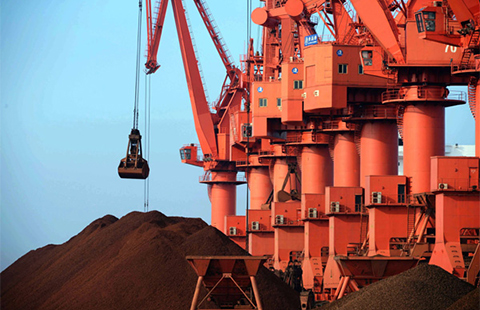'Invest in renewable energy transition'
By Lan Lan (China Daily) Updated: 2015-11-10 09:51"This shows China is serious about its climate pledges to the international world, as it hasn't changed its energy use cap and control or non-fossil fuel targets since the revision," said the report.
UN report Greater effort needed to meet pollution standards
Additional work is needed for Beijing to meet the standards set by the World Health Organization for PM10 and PM2.5, according to a United Nations report released on Monday.
Air pollution control measures taken by Beijing since 1998 have resulted in positive trends toward improved air quality, said the review jointly conducted by the United Nations Environment Programme and Beijing Municipal Environmental Protection Bureau.
For instance, annual concentrations of carbon monoxide and sulfur dioxide are now lower than limits set by the Chinese authorities.
UNEP Executive Director Achim Steiner said the biggest and most complex challenge to the city's air quality remains PM2.5-the fine particles that pose health hazards-and this should continue to be the greatest priority in the years to come.
The safety guideline for PM 2.5 set by the WHO is 25 micrograms per cubic meter, whereas the Chinese government sets a limit of 75 micrograms per cubic meter.
The number of vehicles in Beijing increased by 303 percent between 1998 and 2013, and this has become the primary source of PM2.5 pollution in Beijing, according to the review.
Motor vehicles accounted for 31.1 percent of China's PM2.5 pollution in 2014, followed by coal consumption, industrial production and construction dust.
A series of vehicle emission control measures including promoting rail-based public transport and the phasing out of older vehicles have significantly reduced total vehicle emissions.
In addition, the shift from coal to natural gas has greatly reduced emissions from coal-fired power plants during the period. Coal consumption contributed to 22.4 percent of the city's PM2.5 pollution in 2014.
Annual coal consumption by the power industry in the city fell by 2.56 million tons between 1998 and 2013, while natural gas consumption rose from zero to 1.85 billion cubic meters during the same period, according to the report.
He Kebin, a professor of environmental science at Tsinghua University, said Beijing used to be the only city in the world that consumed such a large amount of coal.
"What has been achieved in Beijing also has value for other cities in China which have a similar energy mix," said He.
Coal-reliant manufacturing industries weigh heavily on the economy of cities in northeastern China, so it is of critical importance for the region to further optimize its energy structure, said experts.
The purpose of the review, which focused on energy structure optimization and coal-led emission control, vehicle emission control and air quality monitoring, was to assess the effectiveness of air pollution control measures in Beijing and to develop recommendations for future implementation, said Kaveh Zahedi, UNEP regional director and representative for Asia and the Pacific.
- China to create national carbon-trading market
- Driving restriction taken out from draft amendment
- 9.4 trillion yuan pledged to fight water, air pollution
- Multi-billion dollar recycling project targets industrial waste around Beijing
- Industrial city faces pollution control conundrum
- The country's war against pollution
- Bohai to bring Avolon under its fold
- Glimpses of economy over next 5 years
- Killer competition in electronic device market claims another victim
- Equities rise to 11-week high on stability hopes
- China's self-developed airliner ARJ21 to be delivered
- China's online retail sales to reach $1.6 trillion in five years: report
- Apple gears up for Nov 11 shopping carnival with iPad Pro
- Investment bank CICC soars in HK as sentiment improves
















